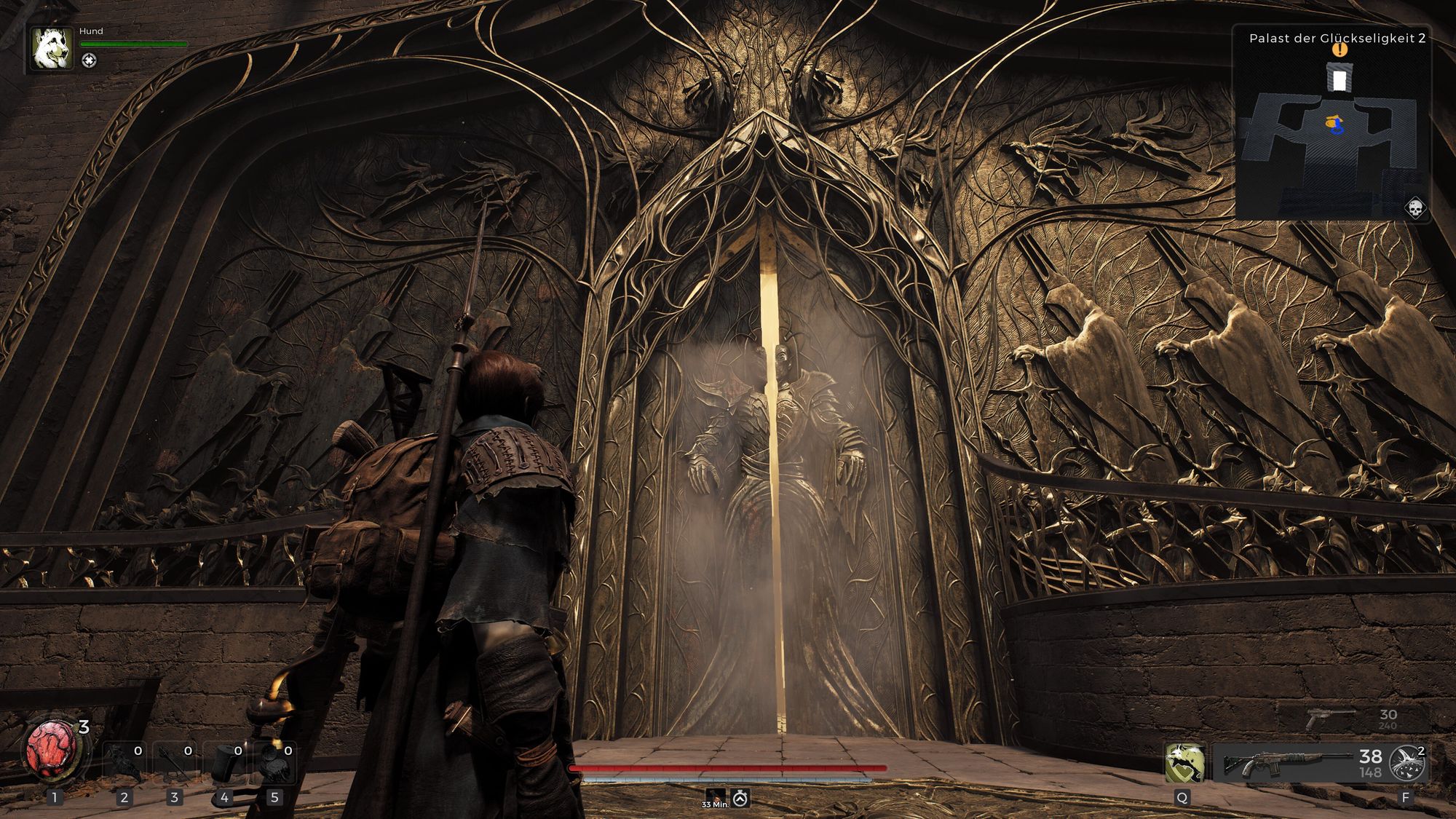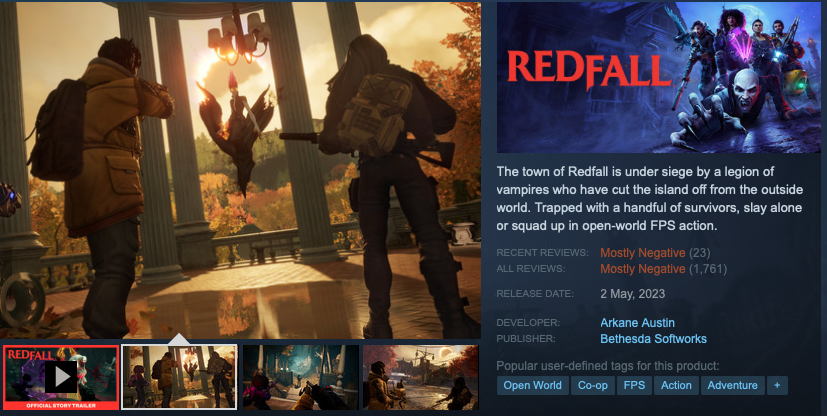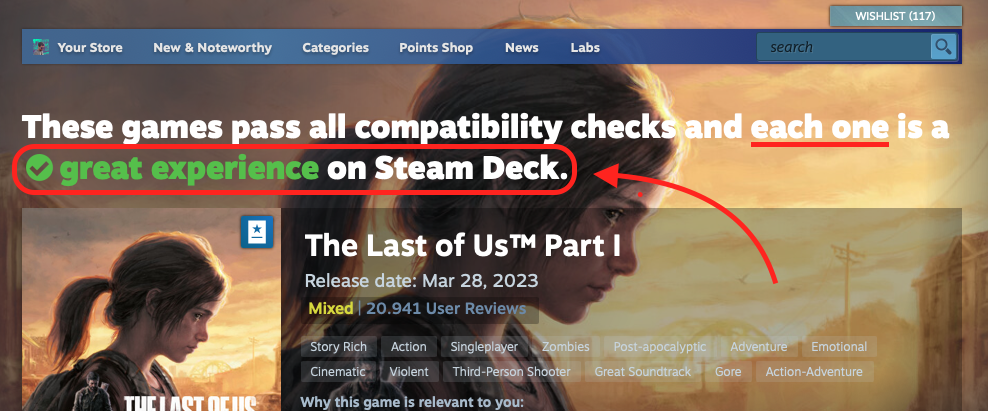Despite being Steam Deck 'Verified' technical issues spoil this otherwise kick-ass sequel from Gunfire Games.
Remnant from the Ashes, released in 2019 by Gunfire Games, was a massive surprise — and although something of an underdog, the shooter-ARPG seemed to hit all the right spots for the community, and therefore, a sequel was inevitably on the cards.
Remnant II (or Remnant 2, if you prefer) is now out in the wild — launching July 25, and I've been able to play and test the game for the past few weeks on Steam Deck.
During our time with the game, a handful of new questions crept up and some remain unanswered: How on earth did this game end up being 'Verified' for the Steam Deck? Do Gunfire Games developers have access to a Pro-version of this handheld? Will we have to accept mediocre optimisations for the next few Unreal Engine 5 releases? Will Valve ever change what a Steam Deck 'Verified' title means — to one that ensures a great experience on Deck?
Successful Qualities of a Successor
To get this right out of the way: Remnant II is an amazing game. I'd argue that it easily outshines its predecessor and will keep many players entertained for months to come.
Funny enough, where Diablo IV fails, Gunfires Games manages to show how it's done, crafting an intriguing world, that invites extensive exploration.
The class system found within Remnant II gives enough incentive to try out different builds. This, along with getting rid of the classic armour system, focusing on buffs, adding upgradable weapons, and essentially streamlining many aspects of Remnant from the Ashes is a welcome decision, and is representative of the quality of life changes made over the original. As a result, you can now focus on exploring a handful of incredibly detailed worlds with more secrets waiting to be discovered than I ever expected.

The story itself isn't particularly novel — but the mix of fresh environments, interesting boss fights, and a good amount of loot and secrets are more than enough to keep you entertained for many hours. Add some friends to join the action, and you'll find plenty to like in Remnant II. Unfortunately, that's not something I can wholeheartedly say about all aspects of the game.
The Difficulty of New Tech
This new release from Gunfires Games is one of the first big Unreal Engine 5 games. In theory, this means environments lit by Lumen and a detail density only Nanite can achieve (without burning your GPU to the ground). In practice, however, whilst the results may look incredible, and the environments Gunfire Games' talented artists crafted here do truly shine — they may perform way worse than you might expect on any hardware. In all fairness, such teething problems are expected when working with a new engine, but the end result here is still a touch unfortunate.
During my pre-release testing — on a capable PC (AMD Ryzen 7 5800X, 32GB RAM, and a Radeon 6900XT) — I've had a really hard time achieving a consistent and visually pleasing result at 4k on higher settings - all the while being dependent on temporal upscaling through FSR (since XeSS was broken back then). Weirdly enough, even aside from the performance itself, I had to deal with a good amount of plain technical issues – such as strange ghosting during camera pans, with both Motion Blur and Temporal Upscaling being disabled.
The PS5 version I tested came with three distinctive graphics modes (Quality, aiming for 30FPS, Balanced, aiming for 60FPS and a Performance mode with an unlocked frame rate). Neither of these have been fully satisfying because it wasn't all too hard to stumble across tech oddities every now and then – such as really distracting screen space ambient occlusion and 120Hz VRR not doing its trick on PS5 at all, which also has since been confirmed by Digital Foundry (see below). Oh, and unfortunately, Remnant II — at least at the time of writing — does not support crossplay nor cross-progression of any kind.
I'm sure Gunfire Games won't take too long to fix all of these, but it's hard to focus on an otherwise amazing journey through many different dimensions when you need to dodge such flaws (...and let's not even talk about how frustrated I am, having just lost 15 hours of progress because my pre-release save game apparently wasn't kept in the Steam Cloud upon upgrade on release day).
Speaking of the release client: It looks like Remnant II already performs much better on PC now, and by ditching FSR in favour of Intel's XeSS, it has helped smooth out (literal) edges and gives a better overall experience. For the curious, the following set of settings gives me a rock-solid 60FPS in 4k on my AMD-focused rig – with the two most impactful options being highlighted:
| Optimized PC Settings | |
|---|---|
| Upscaler | XeSS / DLSS |
| Upscaler Quality | Performance |
| Graphics Quality Preset | Custom |
| Shadow Quality | Medium |
| Postprocessing Quality | High |
| Foliage Quality | High |
| Effects Quality | Low |
| View Distance Quality | Medium |
An Elephant in the Room
When it comes to the Steam Deck though, I didn't expect Remnant II to be such a frustrating endeavour. Especially since the core qualities of the game itself truly deserve to be seen and experienced.
Some context: this new ARPG is "Steam Deck verified". You've read that right; according to Valve and Gunfire Games, Remnant II "is a great experience on Steam Deck"!
The reality looks... well, different.

No matter what I've tried, I couldn't achieve anything that you wouldn't describe as ugly or anything that you'd regard as solid in terms of overall performance. Even at the lowest possible settings and lowered resolution, Remnant II on Steam Deck struggles to deliver something I'd call a great experience.
"Remnant II on Steam Deck struggles to deliver something I'd call a great experience."
Constant frame rate dips into the low 20s, visually an ugly mess resulting from FSR set to Ultra Performance, and regular issues with the many menus not recognizing Steam input actions. As I've discovered early on, even the choice of hair for your character has a measurable impact on the performance, right at the very start in the character creation menu.

Sure, you can tune everything down to achieve something that might merely suit a different game genre, but surely not a shooter. Furthermore, why visually rip apart what Gunfire Games' level designers built for years in such a detailed manner?
If you still want to try Remnant II on Steam Deck, fully knowing that you won't have a great time with the game in its current form, my only recommendations regarding the settings are as follows:
| Steam Deck in-game Settings | |
|---|---|
| Upscaler | XeSS |
| Upscaler Quality | Ultra Performance |
| Graphics Quality Preset | Custom |
| Shadow Quality | Low |
| Postprocessing Quality | Medium |
| Foliage Quality | Low |
| Effects Quality | Low |
| View Distance Quality | Medium |
Make sure to lock the frame rate to 30 FPS at 60 Hz through the quick menu. Unfortunately, this won't result in something I'd call "optimized", but that's all we have right now.
It doesn't help that a member of the dev team reportedly stated on Reddit, they've been able to play the game "[...]at solid 60FPS for the most part[...]", without going into detail about potential tweaks, proving their claims, or answering the many questions of the now bewildered community. (Thanks to SteamDeckHQ for digging this up).

In all honesty, I'm not blaming Gunfire Games at all here. They've done an incredible job in terms of gameplay and level design - and they're best positioned to get the most out of the newest iteration of Epic Games' popular game engine for Remnant II. But Ashmon's comment (seen above) shows that they might have to try to navigate through the dark here. Albeit Valve, in general, provides great and extensive resources regarding their platforms and hardware — the work of Newell's developers via Proton-fixes has done a lot of the heavy lifting, and can't be understated here.
Of course, it's not the first time a game being Deck-verified (especially in advance) has raised questions about the overall validity of Valve's way to market compatibility with their amazing handheld. The open-world co-op shooter Redfall by developer Arcane Austin and Bethesda was also blessed with a precious "Deck verified" badge prior to its release — which unfortunately didn't age all that well.

The same goes with The Last of Us Part I's PC port, which to this day reportedly struggles to maintain consistent frame pacing on nearly all machines. In the end, it looks like there would be an easy fix to it...
Rephrasing certain assets in a manner that doesn't imply that one can easily enjoy every title right away in an optimized form should be enough to avoid some pitfalls here. Or, at least, prevent people from ending up frustrated or longing for more powerful devices to replace their otherwise fancy Steam Deck.

I've tried on a few occasions to reach out for clarification on recent examples of releases being verified, while clearly not being "a great experience on Deck". The only response I've ever gotten was from Valve developer Pierre-Loup Griffais, who simply asked if Redfall on Deck dips below 30FPS - and that was it.
Does it dip under 30 during gameplay?
— Pierre-Loup Griffais (@Plagman2) May 2, 2023
On the other hand, there are countless other games available on Steam that are flagged as "unsupported" but, in reality, run completely fine on Deck.
There are better ways
The thing is — Valve provides more than one way to optimize a game for the Steam Deck. I'm currently speaking with a game studio (which I won't disclose for now) which achieved what initially seemed to be too good to be true:
They launched a version of their game geared explicitly towards the Deck — including completely overhauled and fitting UI assets, and more. A hand-crafted graphics preset is now actually baked into the client itself, making it possible to run at a locked 30FPS on Deck out of the box on low wattages without the need for any additional tweaking.

The catch? You wouldn't even notice that you're playing a different version of the game on Deck because it's a dedicated dataset automatically downloaded on Valve's handheld; different from the stuff Steam would download on other devices. It's (literally) a game-changing feature, which, of course, needs to be leveraged by the studios.
By the way: I will soon exclusively talk with the devs in question, about the challenges they had to overcome and more, in a future video on my Deckverse channel - so make sure to keep an eye on it.
But it's not even ending here, as Richard, a.k.a. FanTheDeck, highlights in an older video: Valve spoke about other examples of advanced Steam Deck optimizations and SteamWorks integrations, which still need to be seen in real-world examples. One of these being capabilities to alter the overall download size for Steam Deck users, by, say, including dedicated lower-res texture packs.
It's out of the question that Valve went all-in for their popular Linux-based handheld, but they can only go so far as to ensure the best possible experience. Imagine a world where developers would actually use these features to the fullest – just like Microsoft demands for their lower-tier Xbox Series S console.
Until then, why not change some words on the Steam storefront, Gabe?
So, whilst we wait for Valve to look at what 'Verified' really means — know this: Remnant II has plenty of promise, but its Unreal Engine 5 teething problems are apparent, and the experience on Steam Deck is one worth avoiding.





